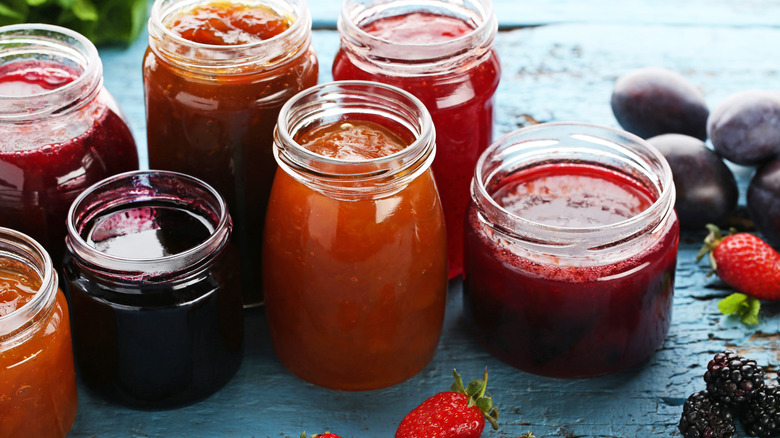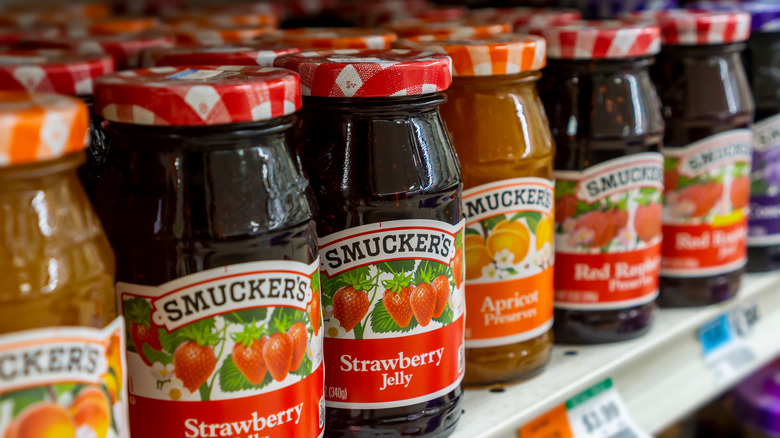The Sneaky Reason Jam Jars Are Dented At The Bottom
Have you ever wondered why your jars of jam have dents on the bottom of them? It's the kind of question that keeps us awake at night as we hopelessly count sheep. It's also that type of gnawing question that has us endlessly searching for answers, but as luck and a little Googling would have it, we think we have loosened the lid on this conundrum and found an answer that might make you think the inventor might have had a sneaky streak.
If you don't know what we are talking about, go check out a jar of grape jelly – be it Smuckers or whatever your favorite flavor and brand might be — and you will notice a slight inward curvature or divot to the bottom of the jar. Once you do take notice, it might have you asking, why isn't the bottom of the jar flat? Is there a purpose to this indent? It's a great question, but believe it or not, the jam jar was engineered that way for a reason, and our friends at Scoop Whoop share the knowledge, finally giving relief to inquisitive insomniacs like us.
The dent makes you think there is more jam in the jar
The Indian digital media company Scoop Whoop explains that one of the reasons for the indent is because it "adds strength" to the container, which is essential for anything that is going to be placed in a glass jar. As a member from Quora.com also points out, the weight of a jar's content (be it jam or peanut butter), "places stresses on sharp and flat angles," hence the indentation. That seems like a logical explanation, but there may be more to it.
According to Clubs of America, that dimple is not required and doesn't serve a practical purpose. The site reveals that it actually makes us believe we are getting more jam in our jars than we actually are. Kind of sneaky, but as they explain it, the indent means there is less space inside the jar, which means, less jam. According to the L.A. Times, this trickery also occurred in 2008 with jam's best bud: peanut butter. When this divot was introduced, it cut the amount of peanut butter consumers were actually buying by a whopping 10%. A pricing consultant with Simon-Kucher & Partners of Cambridge, Mass. told Clubs of America that the indent provides "the illusion that you are buying the same amount." Sneaky, indeed.

